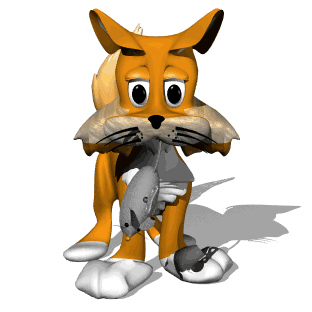Can The Cat Get His Dinner?
 A mouse starts running on a circular path of Radius = 28m with constant speed u = 4m/s. A cat starts from the center of the path to catch the mouse. The cat always remains on the radius connecting the center of the circle and the mouse and it maintains magnitude of its velocity a constant v = 4m/s. How long (in sec) is the chase?
A mouse starts running on a circular path of Radius = 28m with constant speed u = 4m/s. A cat starts from the center of the path to catch the mouse. The cat always remains on the radius connecting the center of the circle and the mouse and it maintains magnitude of its velocity a constant v = 4m/s. How long (in sec) is the chase?
Use π = 7 2 2 .
The answer is 11.
This section requires Javascript.
You are seeing this because something didn't load right. We suggest you, (a) try
refreshing the page, (b) enabling javascript if it is disabled on your browser and,
finally, (c)
loading the
non-javascript version of this page
. We're sorry about the hassle.
4 solutions
Discussions for this problem are now closed
Okay here is what I did. It seems a bit abstract but gets the job done. Simply try to make the velocity or ie direction vector of the cat and you come to realize that it is tending to a half circle shape with a radius of R/2. Now I assumed that the mouse started from point A at the top of the circle. And now after certain time has completed a quarter circle in clockwise revolution to end at point B. Now as the cat traced a semi cricle with end points centre of original circle and B. To test if this is true and if the cat really caught the mouse we just need to see if they covered the same path length as their velocities are anyways equal. And true enough they are equal. Try it yourself. Thus ultimately time taken is equal to the time taken by mouse to make a quarter circle which is nothing but 11 secs. So thats the answer put short. Just see in the comments below, how I came to the conclusion its a semi circular arc.
I did this way ..! :)
Great. Its more of a physics kind of thinking though.
Yeah
brilliant
How did u deduce that the cat's path has a radius of R/2, could you explain further ?
I did it vector wise bro. And a bit of thinking. If you ask me to prove mathematically give me sometime to make a formula. Actually I know how to do it, but not really confident to share it. If you see vector wise it is quite easy. Imagine like circular motion where a force perpendicular to velocity is put to give a semi circle. I think Scott did something similar. Once you get this just check if the pathlengths covered are same. In fact it is, so this was right. Note if the velocity was not equal of both, then the cat would have gone into an infinite looping I suppose. But yes if the mouse had a lower velocity it might have caught it.
i also did in the same way
same 2 you dude
ω c a t = ω m o u s e = 7 1 v c a t = 7 r let u c a t be the component of velocity perpendicular to linear velocity (don’t know if it has a special name) 4 2 = v c a t 2 + u c a t 2 u c a t = 1 6 − 4 9 r 2 = 7 2 8 2 − r 2 but u c a t = d t d r d θ d r = d θ d t × d t d r d θ d r = 7 × 7 2 8 2 − r 2 d θ d r = 2 8 2 − r 2 θ = a r c s i n 2 8 r when r = 28, θ = 2 π = 7 1 1 t = ω θ = 1 1
congrats. brilliant
I am not posting the actual solution; but try to use this hint. Angular velocities of both the cat and mouse are equal. In the frame rotating at this angular velocity, the cat covers distance equal to the radius of the circle with its radial component of velocity to catch the mouse. By solving we get, t = (R/u)arc sin(u/v) = 11s
Clearly, angular velocity of cat is same as that of mouse (i.e. ω = R u
At a radial distance x, cat's velocity has two components, ω x tangential and v r = u 2 − ω 2 x 2 = u 2 ( 1 − R 2 x 2 ) radial.
Hence, v r = d t d x = R u R 2 − x 2
⇒ R ∫ 0 R R 2 − x 2 d x = u ∫ 0 t d t
⇒ t = u R 2 π ≈ 1 1 s